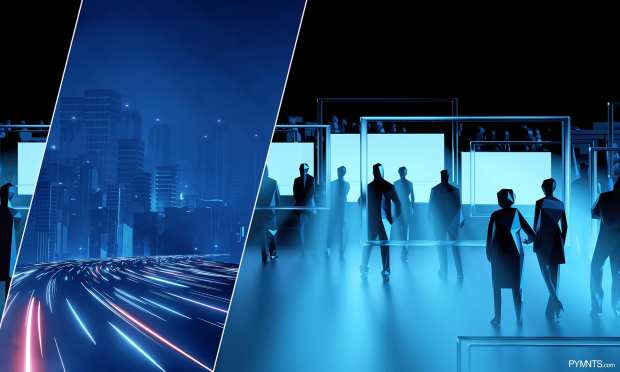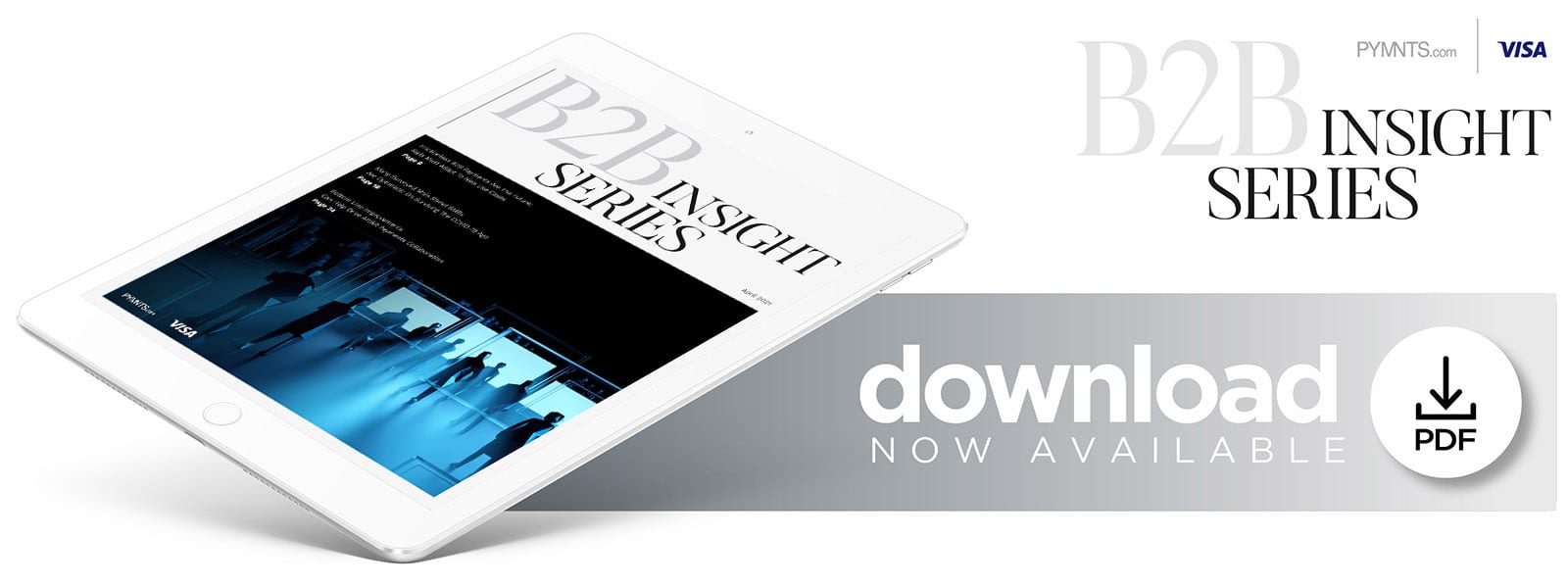Report: B2B’s Year Of (Real-Time) Payments Change — And What Lies Ahead

Over the past year, so much has gone digital, so quickly, that it’s easy to think all facets of life, and of business, have made the leap to mobile devices, to bits and bytes, to click and buy and download and stream.
But yet there are pockets of resistance to a full-on embrace of technology, where information flows haltingly, where payments take days or weeks to clear, where inefficiencies are tolerated because that’s the way it’s always been done. We’re speaking here of the business to business (B2B) space, of course, where trillions of dollars in commerce up and down supply chains rely on phone calls, faxes and paper checks.
As the pandemic hit full force last year, forcing untold millions of businesses to lock down and close up — in all-too-many cases permanently — executives and treasurers, entrepreneurs and gig workers have had to reckon with the relationships that exist between buyers and suppliers.
PYMNTS/Visa research has found, roughly 76 percent of small- and medium-sized businesses (SMBs) report struggling with cash flow needs. And, as noted by several business owners and Visa executives — as part of the latest B2B Executive Insight series — there’s been at least some recognition that “the way it’s always been done” needs to give way to “the way it needs to be done now.” It’s a nod to the new challenges — and opportunities — that confront firms as they cross into new markets, cross borders, make and receive payments in different currencies in a 24/7, always-on global economy.
It may be no surprise that some common themes emerged as PYMNTS delved into the frictions inherent in a B2B landscape where payments total $120 trillion, globally, on an annual basis. Back-office functions have yet to keep pace with what’s on offer — namely, speed and transparency — as faster payments schemes take shape in dozens of countries.
Speed, of course, changes everything. The faster funds move from a buyer’s account to a supplier’s account, the faster goods and services flow, enabling more efficient supply chains to emerge, and for cash management activities to improve to the point where capital can be redeployed as firms capture new go-to-market opportunities and revenue streams. “The check is in the mail” simply doesn’t cut it anymore. As many as 91 percent of firms surveyed by Visa/PYMNTS have expressed interest in real-time settlement.
In one interview detailed in the eBook, Visa’s Alan Koenigsberg, global head of new payment flows, Visa Business Solutions, and Tim Summers, vice president, Visa Direct, note that offerings like Visa Direct enable real-time push payment functionality and can reduce the intermediaries (intermediaries can add costs to transactions).
The shift to digital, to real time, need not be the hallmark of only larger firms. In a panel discussion with Karen Webster, head of U.S. small business, Visa Business Solutions, Matt Baker, Zoku Sushi CEO Charlie Yi and The Better Box owner Tamekah Bost said they’ve had to pivot to multi-channel strategies to meet consumer (and supply chain) demand that can shift delivery models and force them to consider new payment options (such as point of sale with real-time settlement).
As B2B payments become increasingly “consumerized,” the accounts receivable and payable departments within firms can get a digital makeover. Gloria Colgan, senior vice president and global head of Visa Business Solutions card products and platforms, and Chavi Jafa, vice president and head of Visa Business Solutions for Asia Pacific, both agree that the net benefit has been tangible: better operating profits and balance sheets. Read on for more insights on how, long after the COVID-19 crisis recedes, the benefits of B2B modernization will continue to have positive ripple effects.

